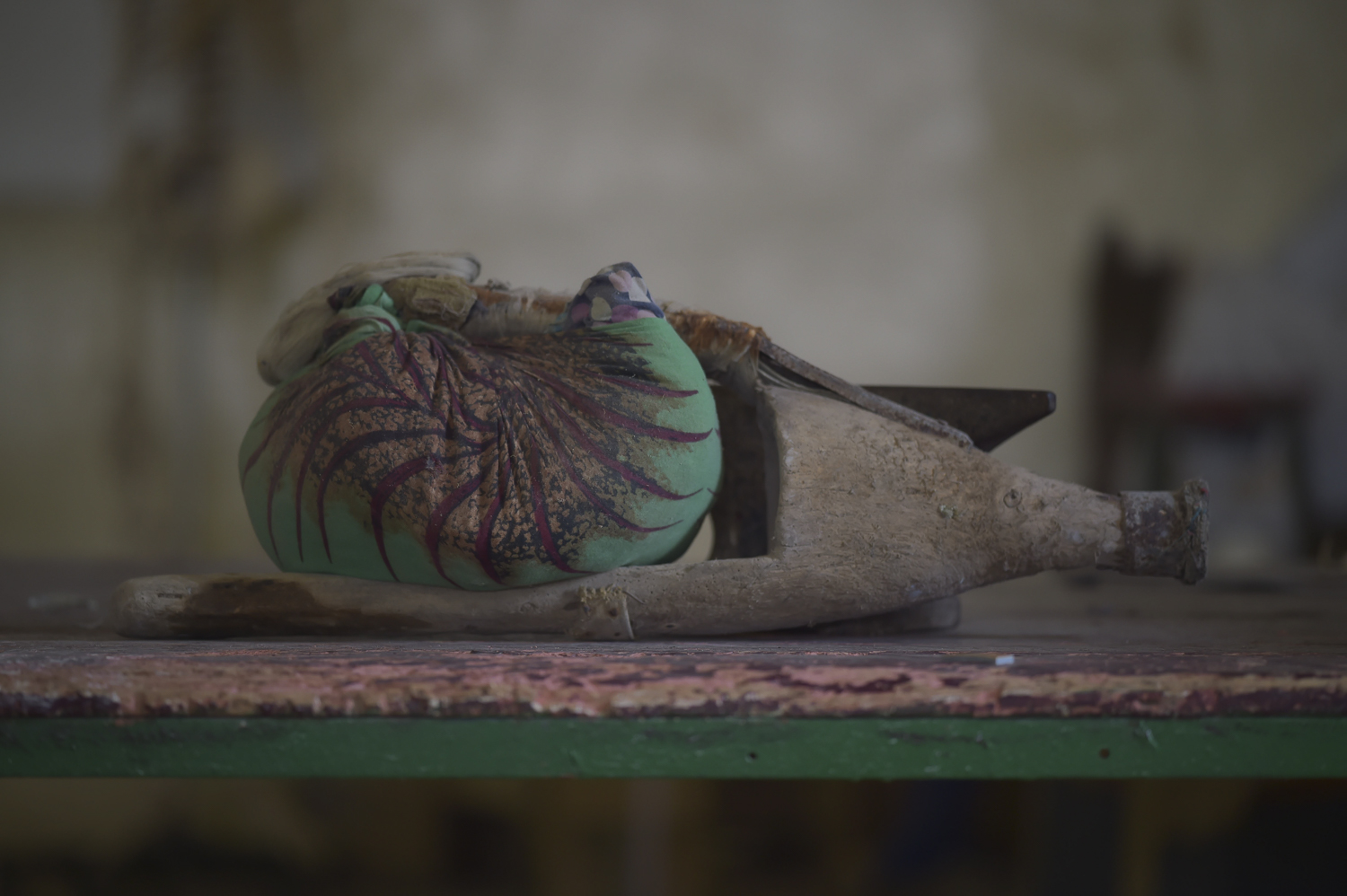

A homemade prosthetic leg is displayed on a table at the Somali Red Crescent Rehabilitation Center in Mogadishu, Somalia. The prosthetic is just one of many left at the center over the years after their owner received a more modern replacement from the organization.
First opened in 1982, the Somali Red Crescent Rehabilitation Center remained open for almost the entirety of the country's more than two decade long civil war and in that time has made more than 15,000 prosthetics for Somalis who have lost their limbs.

A prosthetic leg, made from wood and plastic, of a former soldier who lost his leg whilst fighting in the Ogadon war during the late 1970's against Ethiopia. The man came to the center in his 70's, where he was finally able to replace this traditional prosthetic with a modern one.
Between July 1977 and March 1978 a failed Somali invasion by the Somali dictator Siad Barre into the Ogadon region of Ethiopia wiped out as much of a third of the Somali National Army and injured many more. It was the casualties from this war, in part, that first caused the center to be opened.

A slightly older version of the center's prosthetic leg on display.
Almost all of the center's building of prosthetics is done on site, from creating a mold of the patient's limb, to casting the replacement, and assembling the finished product.

The former owner of this prosthetic, Madina, came to the center from the nearby town of Afgoye. She lost her leg due to disease and gangrine and had this made by a local craftsman for about $50.
While older and traditional prosthetics are sometimes left at the center, more often than not they are taken home by their owners to be used while farming so that their better prosthetic can be saved from too much ware.

Part of an original prosthetic leg from the center that lost its foot. To try and repair it the foot was replaced with the soles of old shoes and the upper region reinforced with cloth.
New prosthetics are provided by the center for just a nominal fee, but often the hardest part for those in need of prosthetics is just in getting to the center itself. People often come to the center from as far as 500km away - across a country with few roads, poor transportation, and territory controlled by hostile armed groups.

The former owner of this prosthetic was a woman who began using it at 20 after losing her leg to disease. She was brought to the center by her husband, who didn't like the look of her traditional event, and wanted her to replae it with a new one.
Many people don't want to give their prosthetics up at first, but usually after a year they come back and don't want their old legs anymore and so will leave their old prosthetics at the center.

A simply made and lightweight prosthetic, made from wood and cloth.
While the majority of the center's prosthetics were made as a result of war when the center first opened, Somalia's slow emergence out of more than two years of conflict can be seen by the center's change in focus in making prosthetics for victim's of war to making them for those that have lost legs through either disease or because of traffic accidents.

A traditional crutch, albeit made out of more modern materials - including timber, nails, and the soles of old sandals.
Except for two months at the beginning of Somalia's civil war in 1991, the Red Crescent Rehabilitation Center has now been operating for more than 30 years and now sees nearly 5000 people a year - almost all of whose lives it profoudly changes.
Today the staff are experts in their field and even regularly travel to other regions of the world that have been affected by war, such as Cambodia, to learn more about making prosthetics.